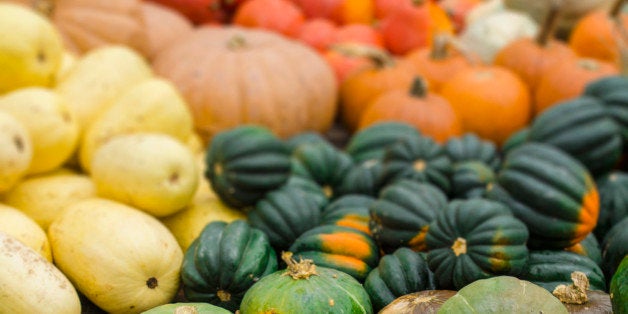
It doesn't matter where you are this season -- there's no escaping them. They're at every family gathering, spicing up your morning coffee run, taking over menus, and even lining office window sills! That's right: winter squash. From the omnipresent pumpkin (and its trendy cousin, pumpkin spice) to striped and spotted decorative squashes, it's almost impossible to imagine the autumn and winter months without these tough, colorful vegetables filling our plates and overflowing from market stalls. We put them in our pies, hollow them out and carve them up for spooky effect, roast them, mash them, and stick them in stews. When the leaves crunch underfoot and the air gets chilly, all other vegetables take a bow, because squashes run this town.
The seasonal obsession with pumpkin spice everything always brings in the media and disdainful critics. As we giggle over massive lists detailing gross acts of pumpkin spice abuse, it's easy to forget that the real thing has star standing in the vegetable world for a reason. Winter squashes are nutrient powerhouses: One cup of baked butternut squash is filled with a vitamins (A, B6, C, and E), as well as magnesium, potassium, and manganese. Pumpkin, butternut, and acorn squashes are some of the most well-known varieties, but there's a world of winter squashes out there just waiting for some extra love:
- Delicata Squash -- Small, oblong, and pale yellow with stripes. Its thin skin is edible, but it also means that it doesn't store as long as other winter squashes and bruises more easily. When cooked it has a sweet potato-like texture with a much earthier, nuttier flavor. It's delicious roasted or stuffed and baked.
Squashes run the fall. While pumpkins get the most attention, its cousins are equally as tasty and versatile. The next time you're in the grocery store or at your local farmers market, branch out and try a different squash.